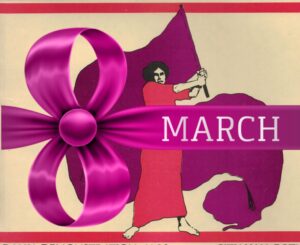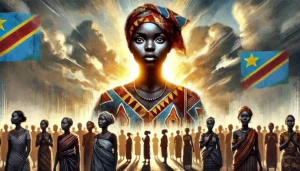 The UN Convention on the Elimination of all forms of Discrimination against Women is the Bill of Rights for the world’s women. Ratified by 188 countries, this international treaty outlines high standards of how to make human rights work for girls and women of all ages. But what, you may be asking, does that have to do with cities? What can CEDAW do that is different from a city council resolution on human rights or the Equal Rights Amendment?
The UN Convention on the Elimination of all forms of Discrimination against Women is the Bill of Rights for the world’s women. Ratified by 188 countries, this international treaty outlines high standards of how to make human rights work for girls and women of all ages. But what, you may be asking, does that have to do with cities? What can CEDAW do that is different from a city council resolution on human rights or the Equal Rights Amendment?
Let us be clear: we applaud any endorsement of human rights for women, and we count ourselves fortunate for the laws to ensure gender equality and women’s empowerment that are already in place. But CEDAW can take us one step further. It is a comprehensive, legally binding instrument covering all economic, political, social and cultural rights specifically for women and girls. It clearly defines discrimination; calls on states to redress wrongs, but can also proactively protect women’s human rights.
When it is applied in full, CEDAW addresses a wide range of issues from safe work places and smoke-free environments to flexible work schedules and equal political participation–as well as providing for equal access to sexual and reproductive health services. CEDAW also lays the legal foundation to address new and emerging issues such as forced marriage and female-genital mutilation: issues that are no longer “ African or Middle East issues”—but are hot topics of debate among immigrant communities right here at home.
Progress may be distressingly slow at the national level, caught in partisan paralysis. But over and over again, cities have shown that they can get things moving farther, faster, and often more creatively than at the state and national levels.
The good news is that we don’t have to start from scratch. In 1998, San Francisco became the first municipality in the world to adopt a local ordinance reflecting the principles of CEDAW. When my organization, the NGO Committee on the Status of Women/NY, launched the Cities for CEDAW campaign we turned to San Francisco to be the US peer leader – and we couldn’t have picked a better partner.
Today, other cities like Los Angeles, Portland, Berkeley as well as the State of Hawaii are on board. This week, during a national call convened by Women’s Intercultural Network and the Leadership Conference on Civil and Human Rights we learned that mayor Garcetti of Los Angeles will make a new proclamation requiring all city departments to measure their performance according to CEDAW. In Louisville, Kentucky, Washington DC and New York City, women’s organizations are building bottom-up coalitions with human rights activists, unions, students and city councils —in support of a city ordinance based on CEDAW. We now have You-tube messages from Mayor Lee of San Francisco, Mayor Shelley Welsch of University City, and Mayor Marilyn Strickland of Tacoma, Washington explaining how Cities for CEDAW can help improve the lives of women and girls. Mayor Ralph Becker of Salt Lake City has also testified that CEDAW provides a good structure for gender audits. All this has happened because years ago, citizens of California took the bold step to make an international treaty relevant to city governance.
How can you make a difference? Creativity should be our top priority. Being creative means using the full mandate of CEDAW to end gender inequality in key jobs throughout the public sector. Being creative means finding new sources of financing –sometimes working with the private sector—to fund pilot projects that make a difference to single mothers living in poverty. Being creative is making sure that women and girls with disabilities, older women, and women from ethnic and religious minorities, LGBT and indigenous communities are registered to vote and that they do so—in local as well as national elections. Along the way, cities must measure, measure, measure their successes in ways that will show other city leaders how to bring these innovations to scale.
Another priority should be to give women and girls a greater voice in urban politics and development. It is well known in the corporate world that bringing women into the boardroom increases the likelihood of diverse and innovative ideas and maximizes productivity. In city development, the same is true—where women lead, we improve the outcomes for whole families and communities. When we bring the other 50% of our citizens on board, we can speed-up and scale up social and economic change.
You should also mobilize men and boys to end sex trafficking and sexual violence against women and girls. As the UN ambassador from Denmark said, “Women never started violence against women—why are we asking them to end it”? The governments of Barbados and Iceland hosted a Barbershop Conference at the UN, where ambassadors—mostly men—could “let down their hair” and talk about family, men’s roles, and masculinity. Since then, I have noticed that men at the UN are more active in using their influence to support gender equality and women’s empowerment. Some, like Dr. Ivan Simonovic, UN under-secretary general for human rights, have already shown strong support for the Cities for CEDAW campaign.
I pledge to do my part. My NGO Committee on the Status of Women/New York and the International Alliance of Women will work tirelessly with others to make sure that the US campaign stays strong. In January this year, the Cities for CEDAW Campaign held a virtual national conference engaging hundreds of participants across the US. The Cities for CEDAW Campaign gathered more momentum at the UN Commission on the Status of Women meeting, and we are going to make sure that it will also be introduced into the UN sustainable development debates during the General Assembly this fall. When I return to New York, our committee will exchange ideas with the coordinators of Habitat III, the next world conference on human settlements, to take place in Ecuador next year.th


